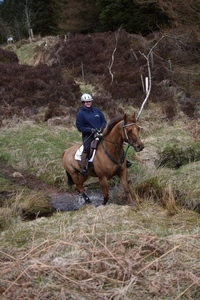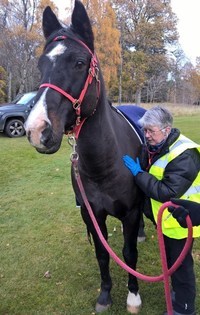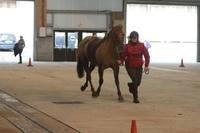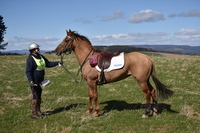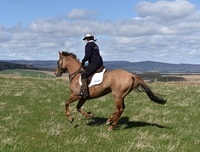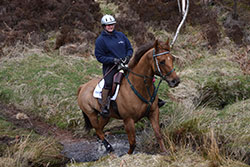
Petplan Equine
Sponsored Rider - Lorna
"‘To Compete is to Win’ is the motto of Endurance, knowing I have the cover, protection and expert advice of Petplan Equine behind me enables my back room team of crew, vet, farrier, coaches, physio and of course myself, to give 100% to my horse and my sport and lead us to success – Together we tackle the miles."

Lorna Hogg is an Endurance rider based in Aberdeenshire in Scotland therefore this guide is mostly specific to Scottish Endurance Riding (SERC) as that is what she knows best. Lorna has included information that applies to the rest of the UK aswell but this is not her area of expertise.
What is endurance?
One of the advantages of Endurance Riding is that it can be enjoyed at any level. It is very much more than weekend hacking, which it is commonly perceived as. Endurance riding promotes an interest in "fittening" the horse, with a view to gradually extending its capabilities, and the same applies to the rider! Management also plays a very important part in endurance and riders and crews can learn a lot about individual horses, likes, dislikes, what works and doesn’t work regarding cooling techniques and what their heart rates do.
The involvement needed to train and compete an Endurance horse can help to develop a relationship and an understanding which many horse owners are simply not aware of. Even amongst the shortest rides, there is always scope to strive for improvement.
I love the sense of adventure that comes from training and competing in endurance. Exploring the countryside and challenging both my horses and myself over tricky terrain and in sometimes difficult conditions. I particularly enjoy the trouble shooting and constant endeavours that are required to be made to improve performance.
How do I get started in Endurance Riding?
Finding out when your next local event is on and offering to go along and help at it is probably the best way to get started and find out more. You will be welcomed with open arms, will make contacts and be able to ask lots of questions. You’ll be able to see the types of horses and what goes on which should then help you with the next step of doing a ride yourself.
The best way to get started is to do a pleasure or social ride, which tend to be between 15 and 29km. If you and your horse go out regularly two to three hour long hacks (active paces), you are probably covering around 16-24km (10-15 miles) and should manage an Endurance Pleasure ride with the time allowed (Min speed - 8km/h or 5mph) without any problems.
Riders will be asked to present their horse for a fitness test. For Pleasure Rides, this usually involves a brief inspection and a trot up for soundness. More thorough inspections are involved for Competitive rides, and for longer distance rides, vet inspections are held at stages throughout the ride and they will have rest periods.
Any breed of horse can do Endurance and I have seen Shetlands to Clydesdales and almost everything in between. Gaited horses, such as Standardbreds and Icelandics, are also found frequently at rides.
Some areas of the UK have rides through the winter months but usually the season runs from February/March/April through to October or November, depending where in the country you are. Generally throughout the season you will find you have relatively local rides available a couple of times each month.
How often you compete is influenced by many factors, but it tends to be the case that those competing at the low to medium levels are out competing at almost any opportunity, in some cases almost every weekend, and those competing at higher distances will only compete a few times each year. Early season rides may be used as training rides.
Those competing almost every weekend, will most likely not work hard between rides and will probably just have a couple of days of light work between events.

